Central to the toolkit of any gastronome is the fish pan for grill, an indispensable and adaptable implement crafted to refine the art of grilling. This particular pan is tailored for the gentle preparation of fish, ensuring an impeccable sear while preserving the texture of the meat. Indispensable to both amateur gourmets and seasoned chefs, the fish pan for grill is key for imbuing seafood with a smoky essence, all the while preventing morsels from slipping into the abyss of the grill.
Types and Characteristics of Fish Pans for Grill
The fish pan for grill assortment includes a diverse array of models, each with unique features tailored to meet specific culinary demands. Comprehensive cookware sets often feature a fish pan, perfect for those intent on a full kitchen outfit. Grill pans boast ridges that emulate traditional grill marks, whereas woks present a capacious, rounded vessel ideal for sautéing and flipping ingredients with fish. Casseroles and deep fry pans appeal to those who favor baked or deep-fried fish. Each pan is engineered to optimize the fish's flavor and texture, be it through searing, smoking, or steaming. Fajita pans and sizzler plates are particularly favored in the restaurant industry for their flair in presentation, frequently accompanied by wooden bases to shield dining surfaces from the heat, thus offering practicality in service.
Structure and Operation of Fish Pans for Grill
A fish pan for grill is thoughtfully constructed to enhance the culinary process. Standard features include an elongated handle for secure handling, ample surface space to fit various fish sizes, and occasionally a perforated base to let the flames kiss the fish with a smoky zest. Some pans are equipped with a non-stick layer to prevent the fish's delicate skin from sticking. Models with foldable handles are available for ease of storage and maneuverability on a bustling grill. These elements coalesce to ensure a fluid grilling experience, from the initial placement of the fish to its ultimate presentation on the diner's plate.
Materials and Benefits
Materials such as cast iron, aluminum alloy, and carbon steel are favored in the fabrication of fish pans for grill due to their superior heat conduction capabilities. Cast iron is lauded for its exceptional heat retention and uniform cooking, offering durability for a grilling lifetime. Aluminum alloy, being lightweight, heats swiftly, catering to chefs who value promptness and efficacy. Carbon steel strikes a balance, lighter than cast iron yet comparably efficient. These materials are selected not just for their thermal properties but also for their durability and ease of upkeep. Non-stick variants often incorporate ceramic coatings or are pre-seasoned to augment their practicality and diminish the need for oils, thus promoting healthier cooking practices.
Business Usages and Applications
In the commercial sphere, the fish pan for grill is an essential in eateries and hospitality establishments where seafood is a menu cornerstone. The capacity for swift and uniform fish preparation is a prized asset in a high-traffic kitchen. In retail environments like supermarkets and department stores, these pans are premium selections for domestic chefs aspiring to achieve restaurant-caliber fare. Online marketplaces showcase an extensive selection of fish pans, appealing to a broad spectrum of culinary enthusiasts, from weekend grillers to culinary connoisseurs. In niche outlets, these pans are often marketed as part of themed cookery sets, which may include additional seafood preparation tools, thereby enhancing their allure as an all-encompassing culinary solution.
Functions and Tasks
The principal role of a fish pan for grill is to uniformly cook fish while bestowing the sought-after grilled taste. It is adept at managing tender fillets or entire fish without the flesh disintegrating or sticking. Advanced iterations may feature amenities such as a press lid to facilitate even cooking on both sides, or drainage systems to siphon off surplus oil, amplifying the health benefits of grilled fish. Certain pans are expressly designed for open flames, like campfires or outdoor grills, endearing them to al fresco cooking aficionados.
Features and Unique Selling Points
Notable attributes of a fish pan for grill include handles that resist heat, non-stick surfaces, and sometimes compatibility with induction bases. These characteristics ensure the pans are secure, convenient, and adaptable to various heating modalities. Some are even crafted to withstand the rigors of a dishwasher, further enhancing their appeal. The pans' unique selling propositions often revolve around their fish-specific design, such as detachable racks or compartments that permit the concurrent preparation of accompaniments, rendering them a versatile kitchen instrument.
Benefits and Positive Outcomes
The advantages of employing a fish pan for grill are numerous. It streamlines the cooking process, mitigates the risk of charring or overcooking delicate fish, and can lead to healthier cooking by minimizing the use of oil. For businesses, this equates to consistent culinary excellence and customer contentment. For home users, it translates to the enjoyment of restaurant-grade seafood in the solace of their own abode. The simplicity of operation and maintenance also means less time devoted to prep and upkeep, freeing up moments to relish the meal and the company.
How to Use a Fish Pan for Grill
To effectively utilize a fish pan for grill, one should preheat the pan, lightly coat both the pan and the fish with oil, and place the fish skin-side down to secure a crisp exterior. It is crucial to avoid overcrowding the pan and to let the fish cook undisturbed initially to form a crust. For pans equipped with a press lid, situating the lid atop the fish can aid in cooking the upper side without the need to flip, thus preserving the fillet's aesthetic.
How to Choose the Right Fish Pan for Grill
Choosing the appropriate fish pan for grill hinges on the user's particular requirements. Factors to consider include the types of fish frequently cooked, the heat source in use, and the scale of your social gatherings. A more expansive pan may be necessary for hosting, while a more compact version might suffice for daily family meals. The pan's material should also be taken into account; for instance, cast iron suits those willing to invest time in its upkeep, whereas non-stick coated aluminum may be preferable for those who favor convenience.
How to Clean and Maintain a Fish Pan for Grill
Cleaning a fish pan for grill typically entails hand washing with warm, soapy water and a gentle brush or sponge. For cast iron pans, eschew soap and opt for a warm water soak, followed by comprehensive drying and a light oil application to preserve the seasoning. Aluminum and non-stick pans are generally simpler to clean, but abrasive materials can mar the surface, hence delicate cleaning is advised.
How to Install a Fish Pan for Grill
While a fish pan for grill does not necessitate installation, correct setup is imperative. Verify the pan's compatibility with your grill or stove, and acquaint yourself with the preheating protocol to ensure the pan attains the optimal temperature for cooking. When using grills, position the pan directly over the heat to bring it to temperature; on stoves, a medium-high flame should suffice.
Delving into the fish pan for grill offerings on Alibaba.com unveils a plethora of culinary opportunities, where the apt utensil can transform the simple task of grilling fish into a culinary craft. With comprehensive details on materials, designs, and applications, business purchasers can make enlightened choices to fulfill their clientele's culinary desires and predilections.
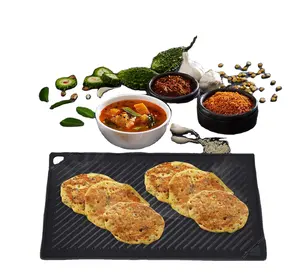
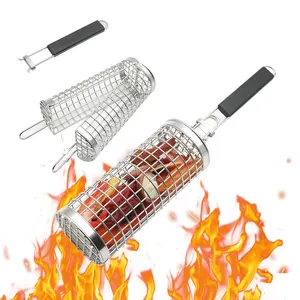

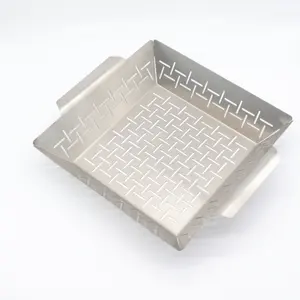

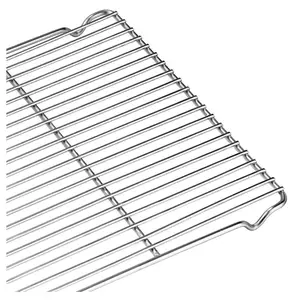






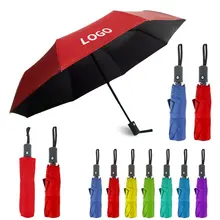




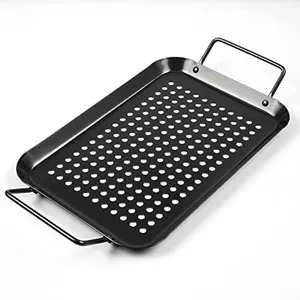























 浙公网安备 33010002000092号
浙公网安备 33010002000092号 浙B2-20120091-4
浙B2-20120091-4